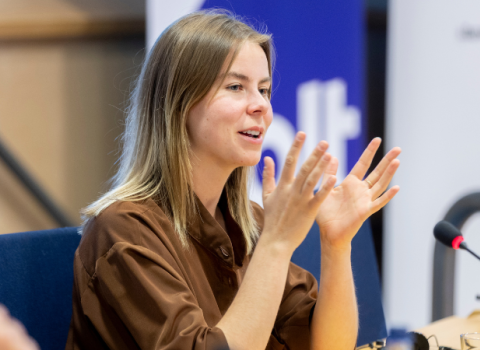The transformation required to create sustainable and climate-neutral societies by 2030 requires bold new ways of working to fundamentally change our social and economic systems. In order to find these new ways, Viable Cities and Vinnova, together with a number of pioneer cities and other key actors, have started the development of the System Demonstrators for Climate Neutral Cities tool.
It is now clear which two cities will receive funds to plan for system demonstrators that can pave the way for conversion in many cities: Lund municipality and the city of Stockholm. Lund and Stockholm are among 23 cities in Sweden and 112 cities in Europe that are mobilizing around the mission of climate-neutral cities by 2030. This new effort is part of this mobilization.
Comprehensive approach to complex challenges
Lund's municipality receives funds to plan a system demonstrator, CoAction Lund, in the north-eastern part of the city. The district around Brunnshög, Ideon and Medicon Village is one of Sweden's most workplace-dense areas with a lot of traffic. There, together with a number of partners, they will create a mobility system with reduced emissions and at the same time maintain accessibility. The mobility system must also be connected to a climate-neutral energy system in the area.
- The interest from various actors in Lund has been huge. That so many organizations here are prepared to do what is required and want to be part of an effort like this is very funny. When we work together on a large scale and take action on difficult issues such as parking, behavior and energy sharing, we can reach the goal of a climate-neutral Lund by 2030, says Markus Paulsson, project manager for CoAction Lund.
In the Snabbsam system demonstrator, the city of Stockholm and its partners will work for a comprehensive change in travel habits, surface use and vehicle fleet in Stockholm's inner city. This as a step on the way towards an emission-free inner city and a climate-positive Stockholm 2030. I Snabbsam wants the environmental zone planned in central Stockholm to be used both as an engine and a window of opportunity in the pursuit of a transport-efficient and emission-free transport system that in the long run extends far beyond the zone's boundary.
- In order to reduce emissions from the transport sector and at the same time raise the quality of life for those who live and work in Stockholm, broad cooperation, courage and system understanding are required. For us, Snabbsam is an excellent context to achieve all this through dialogue, cooperation and joint action with business, the public and academia. Together we make Stockholm a more attractive place and contribute to a smaller global climate footprint, says Gunilla Glantz, Director of Traffic, City of Stockholm.
What is a system demonstrator?
The system demonstrators are intended to take a comprehensive approach to complex challenges, such as those in the ventures above: emission-free transportation, emission-free areas and energy-positive neighborhoods. In order to enforce changes in such huge areas, all actors in society that are affected need to be mobilized – business, authorities, municipality, region, civil society and academia.
In addition, all the knowledge that the work provides needs to be collected so that the insights can be useful and pave the way for change in many places, in Sweden and the world. They must contribute to creating the "new normal" in critical areas, to speed up and strengthen the transition to climate neutrality.
- We have taken a big step closer to climate-neutral cities now that the planning for two system demonstrators can really start. Our ambition is that many cities around Sweden and the world will be able to increase the pace of the transition thanks to this, says Viable Cities program manager Olga Kordas.
- Lund and Stockholm are now leading the way for the cities' climate transition. Their work in these ventures will generate knowledge about how the transition can be done in practice, which other cities can benefit from. It is about, among other things, how different actors in society can be mobilized, new ways of working with innovation and how we use the possibilities of digitalisation, says Darja Isaksson, director general of Vinnova.
This article was first published on 11 October by Vinnova.





 A unique international forum for public research organisations and companies to connect their external engagement with strategic interests around their R&D system.
A unique international forum for public research organisations and companies to connect their external engagement with strategic interests around their R&D system.